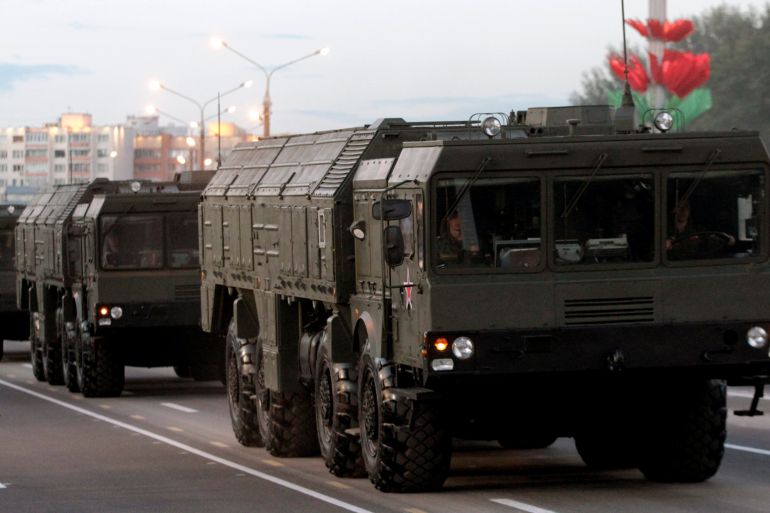Belarus operating Russian Iskander missiles autonomously: Minsk
Ukraine fears Belarus could join the war after a flurry of military drills with Russian forces.

Belarus said on Wednesday that its armed forces were now in autonomous control of Russian-supplied nuclear-capable Iskander mobile-guided missile systems after completing training in Russia, as well as exercises on home soil.
The missiles are capable of hitting targets at a range of up to 500km (310 miles), Minsk’s defence ministry said.
Keep reading
list of 3 itemsUkraine’s Dnipro reels as Russia, Belarus hold military drills
US blocks visas for Belarus officials over ‘continued repression’
The commander of Belarusian rocket and artillery forces told Minsk’s Military TV that they had until now lacked a strike weapon with a range of more than 300km (186 miles).

In comments posted on Military TV’s Telegram channel, Ruslan Chekhov praised the Iskander for its “simplicity of use, reliability, manoeuvrability and firepower”.
Russian forces used Belarus as a launch pad for their abortive attack on the Ukrainian capital, Kyiv, in February last year, and a recent flurry of joint military activity in Belarus has fanned speculation that Moscow may be leaning on Minsk to join its war in Ukraine – something Minsk has ruled out.
The Iskander-M, codenamed “SS-26 Stone” by NATO, replaced the Soviet “Scud”.
Its range reaches deep into Belarus’s neighbours Ukraine and NATO member Poland, whose relations with Belarus are badly strained.